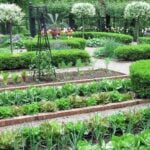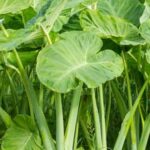Are you eager to start your vegetable garden early in the year? In this article, we will explore how to start vegetable gardens early indoors and the numerous benefits that come with it. Starting your vegetable garden indoors allows you to get a head start on the growing season, ensuring a bountiful harvest later on. Whether you’re a seasoned gardener or just starting out, learning how to start vegetable gardens early indoors can be a rewarding and fulfilling experience.
By starting your vegetable garden early indoors, you can extend the growing season for certain vegetables and get a jump on warmer temperatures. This means that you can enjoy fresh produce earlier than if you were to wait until the outdoor conditions are suitable for planting. Additionally, starting vegetables indoors allows you to have more control over factors such as temperature, light, and moisture, which can be crucial for successful germination and growth.
In this article, we will guide you through the process of selecting the right vegetables for indoor starting, provide a list of materials needed for this endeavor and offer valuable tips for setting up an optimal environment for your seedlings. Additionally, we’ll delve into step-by-step instructions for planting and caring for your seedlings, as well as techniques for transferring them outdoors when they are ready.
Stay tuned as we uncover all the essentials for successfully starting your vegetable garden early indoors.
Choosing the Right Vegetables
When starting a vegetable garden indoors, it’s important to choose the right vegetables that will thrive in this environment. Some vegetables are better suited for early indoor starting because they require a longer growing season or are more delicate when young. By carefully selecting the right vegetables, you can set yourself up for a successful indoor gardening experience.
Long-Growing Vegetables
Certain vegetables have a long growing season and may not reach maturity if sown directly outdoors. Examples include tomatoes, peppers, and eggplants. Starting these plants indoors gives them a head start and allows them to reach maturity before the end of the growing season.
Delicate Seedlings
Some vegetables have delicate seedlings that benefit from the controlled environment indoors. These include leafy greens like lettuce, spinach, and kale, as well as herbs such as basil and cilantro. Starting these seedlings indoors helps protect them from adverse outdoor conditions and ensures a higher success rate.
Cold-Tolerant Vegetables
Cold-tolerant vegetables like broccoli, cauliflower, and cabbage can also be started early indoors. By doing so, you can take advantage of their ability to withstand colder temperatures without risking damage to the young plants. This allows for an earlier harvest and extended growing season.
By understanding which vegetables thrive when started early indoors, you can make informed decisions about what to plant in your indoor garden. Whether it’s long-growing plants, delicate seedlings, or cold-tolerant varieties, choosing the right vegetables is crucial for successful indoor gardening.
Materials Needed
Starting a vegetable garden indoors requires the right supplies and tools to ensure the successful growth of your seedlings. Here is a list of materials needed to start your indoor vegetable garden:
- Seed Starting Trays or Pots: These are necessary for planting your seeds and providing them with a suitable environment for germination.
- Seed Starting Mix: This specialized soil mixture provides the ideal conditions for seedlings to develop strong roots and healthy growth.
- Grow Lights: Since natural sunlight may not always be sufficient, especially during the early stages of growth, grow lights are essential for providing adequate light for your plants.
- Watering Can or Spray Bottle: Seedlings require gentle watering, so having a watering can with a fine spout or a spray bottle will help prevent overwatering and damage to delicate plants.
- Plastic Dome or Plastic Wrap: Creating a mini-greenhouse effect with a plastic dome or wrap helps retain moisture and warmth, promoting faster germination and growth.
In addition to these basic supplies, you may also need gardening tools such as small trowels or hand shovels for transplanting seedlings, labels for identifying different plant varieties, and organic fertilizers or compost for nourishing the soil. By gathering these materials in advance, you can ensure that you have everything necessary to start your indoor vegetable garden successfully.
With the right supplies at hand, you can create an environment that supports healthy plant growth from seedling to mature plants ready for transplantation outdoors.
Setting Up Your Indoor Garden
Choosing the Right Location
When setting up an indoor garden, it’s crucial to choose the right location. Look for a spot in your home that receives plenty of natural light, such as near a south-facing window. If natural light is limited, consider using artificial grow lights to supplement. Keep in mind that temperature and humidity are also important factors to consider when choosing a location for your indoor garden.
Selecting the Proper Containers
Selecting the right containers for your seedlings is essential for their growth and development. Make sure your containers have proper drainage to prevent waterlogging, which can lead to root rot. Consider using biodegradable pots or trays that can be planted directly into the ground once it’s time to transplant the seedlings outdoors.
Providing Adequate Ventilation and Watering
Proper ventilation and watering are key components of creating an optimal environment for your indoor garden. Good air circulation will help prevent diseases and encourage strong plant growth. Additionally, be mindful of overwatering – seedlings need moist soil, but not waterlogged conditions. Consider using a mist bottle or small watering can with a fine rose to ensure even moisture distribution.
By following these tips for setting up your indoor garden, you can create an ideal environment for your plants to thrive before they are eventually transferred outdoors. With careful planning and attention to detail, you’ll be well on your way to a successful indoor gardening experience.
Planting and Caring for Seedlings
Once you have all the necessary supplies and tools ready, it’s time to start planting your seedlings. Begin by filling your containers with a suitable seed starting mix, which is lighter and finer than regular potting soil. Make sure to moisten the mix before planting your seeds. Following the instructions on the seed packet, sow the seeds at the proper depth and spacing. Gently water the soil after planting to ensure good seed-to-soil contact.
After planting, cover the containers with plastic wrap or a clear plastic dome to create a greenhouse environment that retains moisture and warmth for optimal germination. Place the containers in a warm location with indirect sunlight, such as near a south-facing window. Once the seeds have sprouted, remove the covering and place them under grow lights or in a sunny spot to continue their growth.
As your seedlings grow, make sure to monitor their moisture levels by keeping the soil consistently moist but not waterlogged. Water from below by placing containers in trays filled with water and allowing the soil to wick up moisture through drainage holes. Additionally, fertilize the seedlings with a diluted liquid fertilizer every two weeks to promote healthy growth. Rotate the containers regularly to encourage even growth and prevent leggy plants.
| Planting Tips | Caring Tips |
|---|---|
| Fill containers with seed starting mix | Monitor moisture levels |
| Sow seeds at proper depth and spacing | Fertilize with diluted liquid fertilizer every two weeks |
| Create greenhouse environment for germination | Rotate containers regularly for even growth |
Transferring Seedlings Outdoors
After weeks of tender care and nurturing, your seedlings are finally ready to be transferred to your outdoor garden. This step is crucial in ensuring the healthy growth and development of your plants. However, it’s important to time this transition carefully to avoid exposing your seedlings to harsh outdoor conditions too soon. Typically, seedlings should be at least 6-8 weeks old with established roots before being moved outdoors.
Before transferring your seedlings outdoors, it’s important to gradually acclimate them to outdoor conditions in a process known as “hardening off”. Start by placing the seedlings outside for a few hours each day, gradually increasing the time they spend outdoors over the course of 1-2 weeks. This will help them get used to the fluctuating temperatures, wind, and direct sunlight, preventing shock when they are finally planted in the garden.
When selecting a date for transplanting, consider local climate conditions and frost dates. It’s crucial to wait until all danger of frost has passed before moving your seedlings outdoors. Keep an eye on weather forecasts and wait for consistently warm temperatures before making the transfer. In addition, choose a cloudy or overcast day for transplanting to reduce stress on the newly planted seedlings. After planting, water them thoroughly and continue providing care as needed based on their specific requirements.
By following these guidelines for safely transferring your indoor-started seedlings outdoors, you can ensure a successful transition that sets the stage for healthy and productive vegetable plants in your outdoor garden.
Common Mistakes to Avoid
Starting a vegetable garden indoors can be a rewarding experience, but it also comes with its own set of challenges. To ensure the success of your indoor garden, it’s important to be aware of common mistakes that many beginners make and how to avoid them. By being proactive and taking the necessary precautions, you can minimize the risk of encountering issues that could hinder the growth and development of your seedlings.
Here are some common mistakes to avoid when starting a vegetable garden indoors:
- Overwatering: One of the most common mistakes is overwatering your seedlings. This can lead to root rot and other water-related issues. It’s important to water your plants only when the top inch of soil feels dry to the touch.
- Poor ventilation: In an indoor environment, air circulation can be limited, which may result in issues such as mold and mildew. To avoid this, ensure that your indoor garden space has adequate ventilation and consider using a fan to improve airflow.
- Using incorrect containers: Using the wrong type or size of containers for your seedlings can impede their growth. Be sure to use containers that provide proper drainage and sufficient space for root development.
By being mindful of these common mistakes and implementing preventative measures, you can increase the likelihood of a successful indoor vegetable garden.
It’s also essential to regularly monitor your plants for any signs of distress or issues. By catching problems early on, you can address them before they escalate and potentially threaten the health of your seedlings. Additionally, educating yourself on the specific needs of each type of vegetable you are growing will help you anticipate potential challenges and take appropriate action to prevent them from occurring.
Troubleshooting
One of the challenges of starting a vegetable garden early indoors is the potential for pests, diseases, and environmental factors to affect your plants. Recognizing and addressing these issues promptly is crucial for the success of your indoor garden.
Pests such as aphids, mites, and whiteflies can infest indoor plants, causing damage to leaves and reducing overall plant health. To address pest problems, consider using natural remedies such as neem oil or insecticidal soaps. Regularly inspecting your plants for signs of pest infestation and taking preventative measures, such as maintaining good air circulation and proper plant spacing, can also help minimize pest issues.
In addition to pests, diseases such as damping-off (a fungal disease that affects seedlings) can be a concern when starting seedlings indoors. To prevent damping-off and other diseases, use sterilized soil mix for planting, water your seedlings from the bottom to avoid excessive moisture on the surface of the soil, and provide adequate air circulation by using a fan or opening windows when possible. Removing any affected seedlings immediately can also help prevent the spread of disease.
It’s also important to consider environmental factors such as temperature, humidity levels, and light exposure when troubleshooting issues in your indoor garden. Maintaining consistent temperature and humidity levels can promote healthy plant growth while minimizing stress on your seedlings.
Inadequate or excessive light exposure can also impact plant development – ensure that your seedlings receive sufficient light (typically 14-16 hours per day) from sources such as grow lights or natural sunlight near a window. By addressing these common issues proactively with the right knowledge and tools at hand, you can set yourself up for a successful start to your vegetable garden indoors.
| Troubleshooting Topic | Proactive Solution |
|---|---|
| Pest Infestation | Use natural remedies like neem oil or insecticidal soaps; maintain good air circulation |
| Diseases | Use sterilized soil mix; water seedlings from the bottom; provide adequate air circulation |
| Environmental Factors | Maintain consistent temperature and humidity levels; ensure sufficient light exposure |
Conclusion
In conclusion, starting vegetable gardens early indoors provides numerous benefits for gardeners. Not only does it allow for a longer growing season and earlier harvests, but it also gives plants a head start in a controlled environment. This helps to ensure healthier plants and better yields. By carefully selecting the right vegetables, using the proper materials, and providing the optimal growing conditions, gardeners can successfully start their vegetable gardens early indoors.
To recap, some of the key benefits of starting vegetable gardens early indoors include the ability to extend the growing season, protect plants from unpredictable outdoor weather conditions, and have greater control over the plant’s environment. Additionally, by starting seeds indoors, gardeners can give their plants a better chance at thriving and producing a bountiful harvest.
As a final tip for successful indoor gardening, it is important to regularly monitor and care for your seedlings as they grow. This includes proper watering, sufficient light exposure, and addressing any pest or disease issues promptly. By following these final tips and utilizing the information provided in this guide, gardeners can set themselves up for a successful indoor gardening experience and enjoy an abundance of homegrown vegetables throughout the year.
Frequently Asked Questions
How Do You Start an Indoor Vegetable Garden for Beginners?
Starting an indoor vegetable garden for beginners can be relatively simple with the right tools and knowledge. First, choose a well-lit area in your home such as near a sunny window or under grow lights. Then, select the vegetables you want to grow based on your available space and lighting conditions.
Next, gather the necessary supplies including containers, potting soil, seeds or seedlings, and any additional fertilizers or nutrients. Finally, plant your seeds or seedlings according to package instructions and provide appropriate care by watering, providing light, and monitoring for pests or diseases.
How Early Can I Start Vegetable Seeds Indoors?
The timing for starting vegetable seeds indoors can vary depending on your location and the specific vegetables you want to grow. In general, many vegetable seeds can be started indoors 6-8 weeks before the last expected frost date in your area.
This allows enough time for the seeds to germinate and grow into healthy seedlings before they are ready to be transplanted outdoors after the danger of frost has passed.
What Vegetables Should Not Be Started Indoors?
While many vegetables can be successfully started indoors, there are some that are best directly sown into the garden rather than being started indoors as seedlings. These include root crops like carrots and radishes, as their delicate roots don’t transplant well.
Additionally, vegetables with short growing seasons like peas and beans may do better when directly sown outdoors since they mature quickly and don’t require a head start indoors.

If you’re looking to get into vegetable gardening, or are just looking for some tips on how to make your current garden better, then you’ve come to the right place! My name is Ethel and I have been gardening for years. In this blog, I’m going to share with you some of my best tips on how to create a successful vegetable garden.





